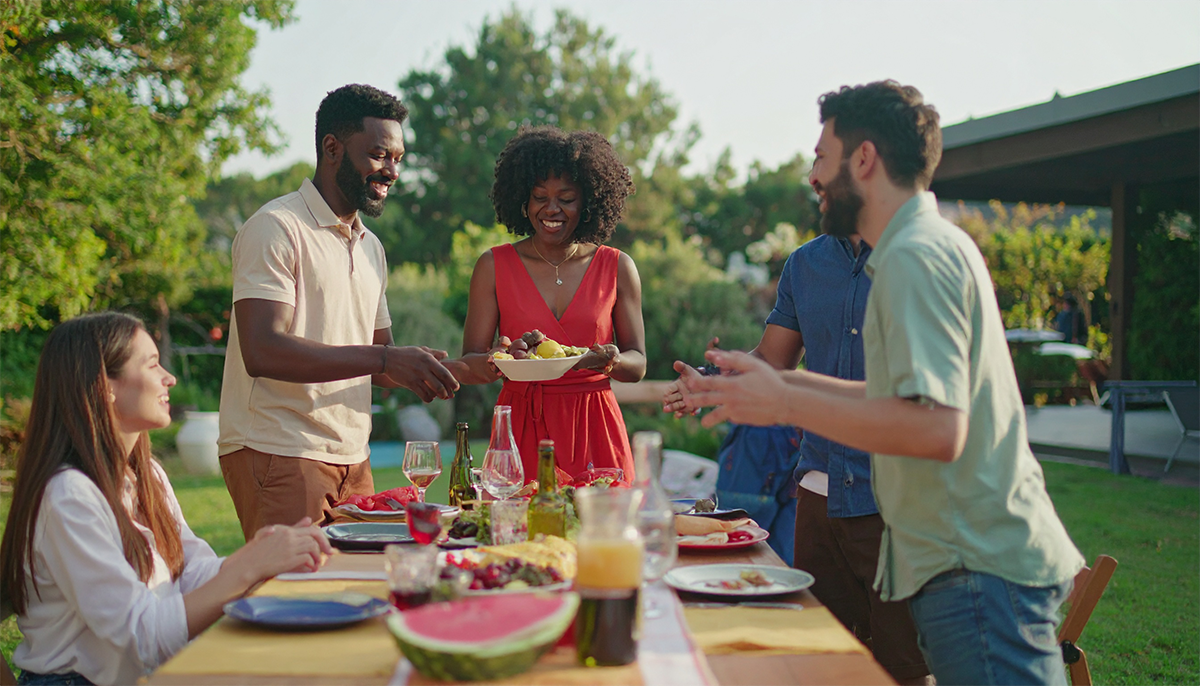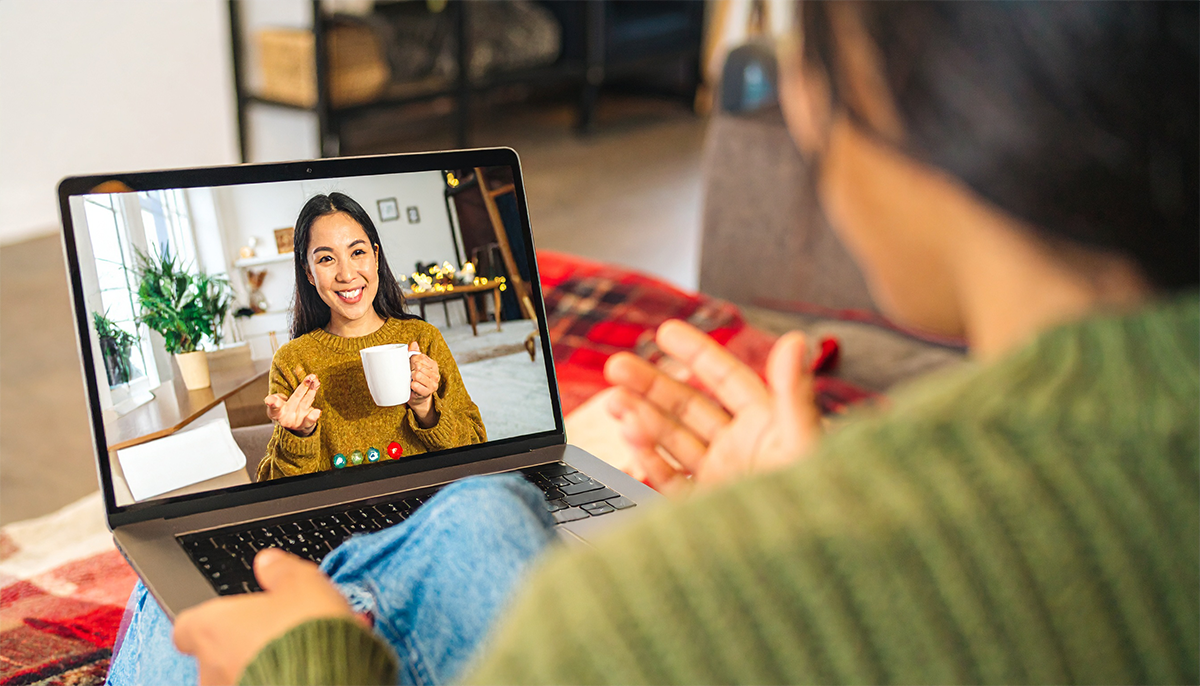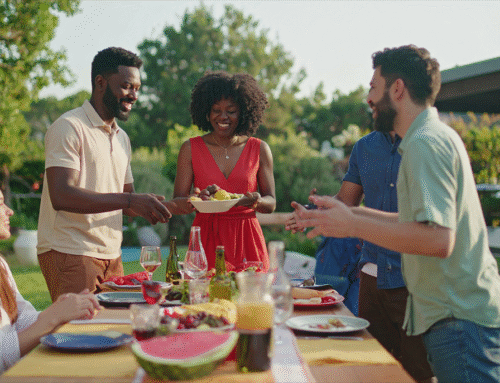8 Proven Ways to Make Friends as an Adult
8 Proven Ways to Make Friends as an Adult
Making friends as an adult feels like trying to solve a puzzle with half the pieces missing. You know you need social connections, but between work, family obligations, and the general exhaustion of adult life, finding the time and energy to build new friendships seems nearly impossible. Add in the awkwardness of not knowing how to naturally meet people outside of work or dating apps, and it’s no wonder so many adults feel socially isolated.
The truth is, adult friendship requires more intentionality than the effortless connections you made in school or college. You can’t just wait for friendships to happen naturally anymore – you have to actively create opportunities for meaningful connections. But here’s the good news: once you understand how adult friendships actually develop, the process becomes much more manageable and a lot less intimidating.
Research shows that it takes approximately 200 hours of interaction to develop a close friendship, which explains why adult friendships feel harder to form – you need consistent, repeated contact with the same people over time. The key is creating systems and opportunities for those repeated interactions to happen naturally.
1. Join Activity-Based Groups Around Your Interests

The secret to making adult friends isn’t networking events or forced social situations – it’s finding people who already share your interests and values. When you join groups centered around activities you genuinely enjoy, friendship develops organically through shared experiences rather than awkward small talk about the weather.
Think about what you actually enjoy doing, not what you think you should enjoy. Are you into hiking, book clubs, photography, cooking, board games, volunteering, or learning new skills? There’s probably a group for it in your area, and if there isn’t, you can start one. The beauty of activity-based friendships is that you already have built-in conversation topics and regular reasons to hang out.
The key is showing up consistently to the same group or activity. Casual acquaintances become friends through repeated exposure and shared experiences. You don’t need to be the most outgoing person in the room; you just need to be reliably present and genuinely interested in the activity.
Activity-Based Friend-Making Strategies:
- Search Meetup.com for groups related to your hobbies
- Join recreational sports leagues or fitness classes
- Take classes at community colleges or community centers
- Volunteer regularly for causes you care about
- Join religious or spiritual communities if that aligns with your beliefs
- Participate in neighborhood associations or community gardens
Building Connections Through Shared Activities
The magic happens in the conversations before and after the main activity. Show up a few minutes early and stay a few minutes late to chat with other participants. Ask people about their experience with the hobby, how they got started, or what they like about it. These natural conversation starters are much easier than trying to think of topics from scratch.
Don’t put pressure on yourself to become best friends with everyone immediately. Focus on enjoying the activity and being a friendly, consistent presence. Some connections will naturally develop into deeper friendships over time.
2. Be Strategic About Your Work Relationships

You spend more waking hours with coworkers than anyone else in your life, so it makes sense to cultivate some of those relationships beyond just professional interactions. The key is being intentional about moving workplace acquaintances into friend territory without making things weird at the office.
Start by identifying coworkers you genuinely enjoy talking with and who seem to share similar interests or values. Pay attention to who makes you laugh, who you find yourself having longer conversations with, or who you’re curious to know more about outside of work context. Not every coworker needs to become a friend, but one or two solid friendships can significantly improve both your work experience and social life.
The transition from coworker to friend usually happens gradually through casual invitations that extend your interactions beyond the office. This might mean grabbing coffee before work, meeting for lunch away from the office, or attending after-work events together. The goal is creating space for more personal conversations and getting to know each other as whole people rather than just professional roles.
Workplace-to-Friendship Transition Steps:
- Suggest coffee meetings or lunch away from the office
- Invite coworkers to after-work activities or events
- Share appropriate personal stories and interests during breaks
- Ask about their lives, hobbies, and interests outside of work
- Organize group activities like happy hours or group fitness classes
- Follow up on personal things they’ve shared in previous conversations
Maintaining Professional Boundaries
The trick to workplace friendships is maintaining appropriate boundaries while still building genuine connections. Keep personal drama and complaints about work separate from your friendship interactions. Focus on shared interests and positive aspects of your relationship rather than bonding primarily over work stress or office gossip.
Be mindful of workplace dynamics and avoid creating exclusive friend groups that might alienate other colleagues or affect team dynamics.
3. Leverage Technology and Apps Designed for Friendship

Just like dating apps revolutionized romantic connections, friendship apps are making it easier to find like-minded people in your area who are also looking for new friends. Apps like Bumble BFF, Meetup, and Friender use similar matching systems to connect people based on shared interests, location, and friendship goals.
The advantage of friendship apps is that everyone using them is explicitly looking to make new connections, which eliminates the guesswork about whether someone is interested in being friends. You can be upfront about wanting to expand your social circle without feeling awkward or presumptuous.
Success with friendship apps requires the same principles as successful online dating: create an authentic profile that showcases your real interests, be proactive about reaching out to potential connections, and suggest meeting in person relatively quickly to see if there’s real compatibility beyond the digital interaction.
Digital Friend-Making Strategies:
- Create authentic profiles on friendship apps that showcase your real personality
- Use location-based features to find people nearby
- Join online communities related to your interests before meeting in person
- Participate in virtual events and activities to practice social skills
- Follow up consistently with people you connect with online
- Suggest low-pressure in-person meetups like coffee or group activities
Making Online Connections Real
The goal of digital platforms is to facilitate real-world connections, not replace them. Once you match with someone or find people through online groups, suggest meeting in person for casual, public activities. Coffee dates, group events, or activity-based meetups work better than lengthy one-on-one dinners for initial friend meetings.
Don’t get discouraged if not every online connection translates to real friendship. Like dating, friend-making through apps requires meeting several people to find genuine compatibility.
4. Become a Regular at Local Establishments

Becoming a familiar face at places you enjoy creates natural opportunities for casual conversations and connections with both staff and other regulars. Whether it’s a coffee shop, gym, bookstore, farmer’s market, or local bar, showing up consistently at the same times allows relationships to develop organically over time.
The key is choosing places that align with your authentic interests and lifestyle rather than forcing yourself to hang out somewhere just because it seems social. If you’re not a bar person, don’t try to make friends at bars. If you love coffee and reading, become a regular at a cozy coffee shop where you can genuinely enjoy spending time.
Staff members at your regular spots can also become valuable connections who introduce you to other regulars or let you know about events and activities happening in the space. Building friendly relationships with bartenders, baristas, bookstore employees, or gym trainers creates a social network that extends beyond just customers.
Regular-Spot Networking Tactics:
- Visit the same places at consistent times to see familiar faces
- Engage in brief, friendly conversations with staff and other regulars
- Participate in events or activities hosted by your regular spots
- Bring books, laptops, or other conversation starters when appropriate
- Be genuinely interested in the people and place rather than just networking
- Offer to help with events or activities when opportunities arise
Quality Over Quantity Locations
Focus on becoming a true regular at 2-3 places rather than spreading yourself thin across many different establishments. Deep familiarity with a few spots allows for stronger relationships and better opportunities for meaningful connections.
Choose places where you can comfortably spend time alone, so your presence feels natural rather than forced or desperate for social interaction.
5. Reconnect with Old Friends and Expand Their Networks

Sometimes the best way to make new friends is through people you already know and trust. Reconnecting with old friends, distant relatives, or former coworkers can reignite relationships that may have faded due to life circumstances rather than any fundamental incompatibility.
Reach out to people you’ve lost touch with but genuinely liked and see if they’re interested in rekindling the friendship. Many people are dealing with the same adult friendship challenges you are and would welcome the opportunity to reconnect. Don’t let embarrassment about lost time prevent you from reaching out – most people are understanding about how life gets busy.
Once you’ve reconnected with existing friends, they become valuable sources for meeting new people through their own social networks. Friends of friends often make great connections because you already have built-in commonalities and mutual social proof.
Reconnection and Network Expansion Strategies:
- Reach out to old friends through social media or text
- Attend reunions, weddings, and social events when possible
- Ask current friends to introduce you to their other friends
- Suggest group activities that include multiple friend groups
- Be open about looking to expand your social circle
- Host gatherings that bring together different groups of people
Hosting as a Friendship Strategy
Becoming the person who organizes gatherings gives you control over creating the social opportunities you need while providing value to others who also want more social connection. Host casual game nights, potluck dinners, movie nights, or seasonal gatherings that bring people together in low-pressure environments.
You don’t need a perfect house or expert hosting skills – the goal is creating opportunities for people to connect, not impressing anyone with your entertaining abilities.
6. Practice the Art of Following Up
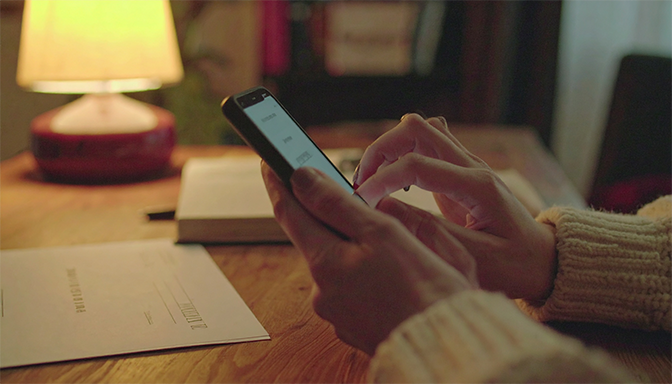
The biggest difference between successful adult friend-makers and those who struggle is consistency in following up after initial connections. You might meet someone interesting at an event, have a great conversation, exchange contact information, and then… nothing. The friendship dies because neither person takes responsibility for maintaining momentum.
Adult friendships require intentional follow-up because everyone’s lives are busy and chaotic. Don’t wait for the other person to reach out first or assume they’re not interested if they don’t immediately suggest hanging out again. Many people want to build friendships but are shy, overwhelmed, or simply bad at taking initiative.
The follow-up doesn’t need to be elaborate or perfect. A simple text referencing something you talked about, sharing a relevant article or meme, or suggesting a specific activity shows that you’re interested in continuing the connection. The key is doing it within a few days while the interaction is still fresh in both your minds.
Effective Follow-Up Techniques:
- Text within 24-48 hours referencing something specific from your conversation
- Share articles, memes, or information related to shared interests
- Suggest specific activities with concrete dates and times
- Follow up on things they mentioned they were dealing with or excited about
- Invite them to events or activities you’re already planning to attend
- Be consistent in your communication without being overwhelming
Creating Friendship Momentum
Think of new friendships like starting a fire – they need consistent attention and fuel in the early stages to become self-sustaining. This means regular (but not overwhelming) contact, suggesting concrete plans, and showing genuine interest in their life and experiences.
Don’t get discouraged if some people don’t respond or seem less interested than you initially thought. Focus your energy on the connections that show mutual interest and enthusiasm.
7. Be Genuinely Interested in Others

The fastest way to build connections with new people is to become genuinely curious about their lives, experiences, and perspectives. Most people are starved for authentic interest and attention, so someone who asks thoughtful questions and remembers details from previous conversations immediately stands out as potential friend material.
This isn’t about being fake or manipulative – it’s about cultivating genuine curiosity about the people you meet. Ask follow-up questions about things they mention, remember details about their interests or challenges, and show that you see them as a complete person rather than just someone to fill your social needs.
Good conversationalists and potential friends share stories and experiences rather than just exchanging basic information. Be willing to be vulnerable and share meaningful details about your own life, which gives others permission to open up as well.
Interest-Building Conversation Skills:
- Ask open-ended questions that invite storytelling
- Remember and follow up on details from previous conversations
- Share your own experiences and stories, not just ask questions
- Show curiosity about their perspectives and opinions
- Listen actively without planning what you’ll say next
- Find common ground and shared experiences to bond over
Balancing Interest with Authenticity
The goal is genuine connection, not just being liked by everyone you meet. Be selective about who you invest time and energy in getting to know better. Not every person you meet needs to become a close friend, but everyone deserves basic respect and kindness.
Focus on finding people whose company you genuinely enjoy rather than trying to force friendships with people who don’t naturally click with your personality and interests.
8. Create Your Own Social Opportunities

Instead of waiting for perfect friend-making opportunities to appear, take control by creating your own social events and gatherings. This positions you as a connector and leader while giving you the power to curate the type of social experiences you actually want to have.
Start small with low-pressure gatherings that align with your interests and personality. This might be organizing hiking groups, book clubs, game nights, potluck dinners, or seasonal celebrations. The key is choosing activities you genuinely enjoy so that even if only a few people show up, you still have a good time.
Creating social opportunities also makes you valuable to other people who are also looking for more social connection but don’t want to take the initiative themselves. You become the person who makes things happen, which naturally attracts others who appreciate having social options without the work of organizing them.
Social Opportunity Creation Ideas:
- Organize regular activities around your hobbies or interests
- Host seasonal gatherings or celebrations
- Create Facebook groups or group chats for coordinating activities
- Suggest group outings to events, restaurants, or activities
- Start neighborhood or community-based social groups
- Coordinate group trips or weekend activities
Building Community Through Consistency
The most successful friend-making events are those that happen regularly and consistently. Monthly game nights, weekly hiking groups, or seasonal celebrations give people something to look forward to and create habits around social connection.
Don’t get discouraged if your first few events are small or if some people don’t return. Building social momentum takes time, and the people who consistently show up are likely to become your closest friends.
Conclusion: Patience and Persistence Pay Off
Making friends as an adult requires more intentionality than childhood friendships, but it’s absolutely possible with the right strategies and mindset. The key is creating multiple opportunities for repeated contact with like-minded people while being genuinely interested in building meaningful connections rather than just collecting acquaintances.
Your Adult Friend-Making Action Plan
- Choose 2-3 strategies that align with your personality and lifestyle
- Commit to showing up consistently for at least 3 months
- Practice following up with new connections within 48 hours
- Focus on quality connections rather than quantity of acquaintances
- Be patient with the process – deep friendships take time to develop
- Stay open to different types of friendships serving different needs
Remember: Adult friendships develop differently than childhood ones, but they can be just as meaningful and supportive. Don’t compare your current social situation to your past or to others’ highlight reels on social media. Focus on building the type of friendships that genuinely add value and joy to your life.
Affiliate Disclaimer: As an affiliate of other sites and as an Amazon Associate we earn from qualifying purchases. Some links in this article may be affiliate links where a purchase would provide us with a commission. We only recommend products and services we truly believe can help you on your personal growth journey.
Advice Disclaimer: This advice is for informational and entertainment purposes only and not a substitute for professional counseling, therapy, financial, legal, or medical advice. You are responsible for your own decisions and actions. For serious issues, please consult qualified professionals.
6 Simple Strategies to Maintain Long-Distance Friendships
6 Simple Strategies to Maintain Long-Distance Friendships
Watching your best friend pack up their life and move across the country feels like losing a piece of yourself. Whether it’s a job relocation, family obligations, or life taking you in different directions, maintaining close friendships across distance requires more intention and creativity than most people realize. The friendship that once thrived on spontaneous coffee dates and regular hangouts now has to survive on scheduled video calls and carefully coordinated visits.
The reality is that many long-distance friendships fade not because people stop caring about each other, but because they don’t know how to maintain emotional intimacy across physical distance. Life gets busy, time zones complicate communication, and without the natural opportunities for casual interaction, even the strongest friendships can start feeling forced or one-sided.
But here’s what’s encouraging: technology has made maintaining long-distance friendships easier than ever before, and research shows that friendships based on strong emotional bonds can actually survive and thrive across distance when both people are committed to making the effort. The key is understanding that long-distance friendships require different maintenance strategies than local ones.
1. Establish Regular Communication Rhythms

The biggest killer of long-distance friendships is irregular, sporadic communication that leaves both people feeling disconnected and uncertain about the relationship. Instead of relying on random check-ins when you happen to think of each other, create predictable communication patterns that both friends can count on and look forward to.
This doesn’t mean talking every day or having hours-long conversations, but it does mean establishing some kind of regular contact that works for both your schedules and communication styles. Maybe it’s a weekly video call, daily text exchanges, or monthly phone marathons – the key is consistency and mutual agreement on what feels sustainable.
Regular communication rhythms also prevent the anxiety that comes with long gaps in contact. When you know you’ll talk every Sunday evening or exchange daily voice messages, you don’t have to worry about whether your friend is upset with you or whether the friendship is fading. The predictable contact provides security and continuity that mimics the natural rhythm of local friendships.
Communication Rhythm Options:
- Weekly video calls at the same time each week
- Daily voice messages or texts sharing highlights from your day
- Monthly longer phone calls for deeper catch-up conversations
- Regular online activities like watching movies together or playing games
- Shared photo albums or social media groups for ongoing connection
- Scheduled “friend dates” where you both engage in the same activity while video chatting
Finding Your Communication Style
Different friendships thrive with different communication styles. Some friends prefer long, in-depth conversations once a week, while others like brief daily check-ins. Pay attention to what feels natural and energizing for both of you rather than forcing a communication style that doesn’t fit your personalities or schedules.
Be honest about your communication preferences and limitations. If you hate talking on the phone, suggest text-based alternatives. If video calls feel too formal, try voice messages while doing other activities.
2. Share Real-Time Experiences Virtually

One of the biggest challenges in long-distance friendships is missing out on the small, daily experiences that create intimacy and shared memories. You can’t grab spontaneous coffee or be physically present for each other’s important moments, but you can create virtual shared experiences that provide some of that same connection and fun.
Technology offers countless ways to spend time together despite physical distance. You can watch movies simultaneously while video chatting, play online games together, take virtual tours of museums, or even cook the same recipe while on video call. The goal is creating new shared experiences and memories rather than just catching up on what you’ve each been doing separately.
Real-time virtual experiences also provide natural conversation topics and inside jokes that help maintain the playful, intimate aspects of friendship. Instead of every conversation feeling like a formal update session, you’re actively creating new memories and experiences together.
Virtual Experience Ideas:
- Watch parties using apps like Netflix Party or Discord
- Online gaming sessions with multiplayer games
- Virtual museum tours or online classes taken together
- Cooking or baking the same recipe while video chatting
- Reading the same book and discussing chapters
- Taking online fitness classes or workout sessions together
Creating New Traditions
Develop new traditions that are specific to your long-distance friendship. Maybe you always watch the same TV show premiere together, have monthly virtual game nights, or send care packages on each other’s birthdays. These traditions give you both something special to look forward to and create continuity in your friendship.
The traditions don’t have to be elaborate or expensive – they just need to be meaningful to both of you and provide regular opportunities for connection and shared experience.
3. Make Visits Special and Intentional

When you do have the opportunity to visit each other, make those visits count by being intentional about how you spend your time together. Resist the urge to pack every moment with activities or treat visits like tourist excursions. Instead, focus on quality time that allows for real connection and the kind of casual hanging out that you miss most about local friendships.
Plan a mix of special activities and normal life experiences. Yes, you want to do some fun things you can’t do virtually, but also make space for the mundane activities that create intimacy – cooking dinner together, running errands, or just lounging around talking. These everyday moments often end up being the most meaningful parts of visits.
Be realistic about visit expectations and communicate openly about what you both want from the time together. Some visits are better for adventure and exploration, while others are better for relaxation and deep conversation. Match the visit style to what you both need at that point in your lives.
Intentional Visit Planning:
- Balance special activities with casual hanging out time
- Include each other in normal daily routines and activities
- Plan visits that allow for both quality time and relaxation
- Discuss expectations and desires for the visit beforehand
- Take photos and create mementos to remember the visit
- Make plans for the next visit before the current one ends
Managing Visit Anxiety
It’s normal to feel some pressure around visits after long separations, especially if visits are rare and expensive. Don’t put pressure on every visit to be perfect or to catch up on everything you’ve missed. Focus on enjoying each other’s company and reconnecting, rather than trying to cram months of friendship into a few days.
Accept that you might need a day or two to feel comfortable with each other again after long separations, and that’s completely normal.
4. Stay Involved in Each Other’s Daily Lives
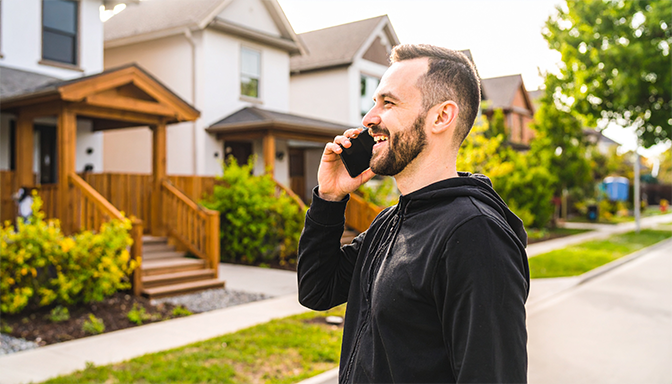
Long-distance friendships often fail when they become limited to major life updates and milestone events. While it’s important to share big news, the real intimacy in friendship comes from knowing the small details of each other’s daily lives – the coworker who’s driving them crazy, the new coffee shop they love, or the random thing that made them laugh.
Make an effort to share mundane details and ask about ordinary aspects of each other’s lives. Instead of just asking “How are you?” get specific about their work situation, living situation, dating life, family dynamics, or current obsessions. Show that you’re interested in them as a whole person, not just the highlight reel of major events.
Social media can be helpful for staying aware of daily life details, but don’t rely on it as your primary source of information about your friend’s life. Use it as a conversation starter rather than a replacement for direct communication.
Daily Life Sharing Strategies:
- Send photos of random moments throughout your day
- Share voice messages while commuting or doing routine activities
- Ask specific questions about work, living situation, and daily routines
- Remember and follow up on small things they’ve mentioned
- Share mundane struggles and victories, not just major milestones
- Use social media to stay aware but not replace direct communication
Building Emotional Intimacy
Emotional intimacy requires vulnerability and consistency in sharing both positive and negative experiences. Don’t just share when things are going well – also reach out when you’re struggling, stressed, or dealing with challenges. Real friendship involves supporting each other through difficult times, not just celebrating successes.
Be willing to share the messy, imperfect aspects of your life rather than only presenting a polished version of yourself.
5. Send Thoughtful Care Packages and Surprises

Physical gifts and surprises take on special meaning in long-distance friendships because they represent tangible reminders of your connection and care. You don’t need to spend a lot of money or send elaborate packages – the thought and effort matter more than the monetary value of what you send.
Care packages work best when they’re personalized to your friend’s current interests, needs, or challenges rather than generic gift items. Pay attention to things they mention wanting, needing, or struggling with, and send items that show you’ve been listening and thinking about their specific situation.
The surprise element is often more meaningful than the contents themselves. Receiving an unexpected package from a distant friend provides a boost of connection and love that can brighten someone’s entire week.
Thoughtful Care Package Ideas:
- Local specialty foods or treats from your area
- Books, magazines, or small items related to their current interests
- Comfort items for when they’re stressed or going through difficult times
- Photos, letters, or handmade items that can’t be digitally shared
- Practical items they’ve mentioned needing or wanting
- Seasonal items or decorations for holidays and special occasions
Making Distance Feel Smaller
The goal of physical surprises is to make the distance feel smaller by creating tangible reminders of your friendship. Include handwritten notes explaining why you chose each item or sharing memories and inside jokes. The personal touch transforms a simple package into a meaningful expression of your friendship.
Consider sending postcards or letters regularly – there’s something special about handwritten communication that emails and texts can’t replicate.
6. Accept That the Friendship Will Change

One of the most difficult aspects of maintaining long-distance friendships is accepting that the relationship will inevitably change form, even if the emotional connection remains strong. You can’t replicate the exact same friendship dynamic you had when you lived in the same place, and trying to do so often leads to frustration and disappointment.
Instead of mourning what the friendship used to be, focus on appreciating what it is now and what it can become. Long-distance friendships often develop different strengths – deeper communication skills, more intentional connection, and appreciation for the time you do spend together. Some aspects of the friendship might actually improve when you’re forced to be more deliberate about communication.
Be honest about the challenges and limitations of distance while also celebrating the ways your friendship adapts and grows. Not every local friendship would survive the transition to long-distance, so if yours does, that’s evidence of a particularly strong and valuable connection.
Adaptation Strategies:
- Acknowledge that some aspects of the friendship will be different
- Focus on the strengths of your long-distance dynamic
- Be patient with the adjustment period as you both adapt
- Communicate openly about challenges and frustrations
- Celebrate the friendship’s resilience and evolution
- Stay open to new ways of connecting and supporting each other
Managing Expectations
Set realistic expectations about how often you’ll communicate, how visits will work, and what role the friendship will play in your daily life. Long-distance friendships often require different emotional investment patterns than local ones – they might be less constant but more intense during your actual interactions.
Don’t compare your long-distance friendship to local friendships or to what your relationship used to be. Focus on what works now and what feels sustainable for both of you.
Conclusion: Distance Doesn’t Have to Mean Disconnection
Maintaining meaningful long-distance friendships requires more effort and creativity than local ones, but it’s absolutely possible when both people are committed to adapting their connection style. The key is embracing new ways of sharing experiences and staying involved in each other’s lives while accepting that the friendship will look different than it did when you lived nearby.
Your Long-Distance Friendship Success Plan
- Establish communication rhythms that work for both schedules and styles
- Create virtual shared experiences and new traditions
- Make visits intentional and meaningful without putting pressure on perfection
- Stay involved in daily life details, not just major milestones
- Send thoughtful surprises that show you’re thinking of each other
- Accept and appreciate how your friendship evolves with distance
Remember: The friends who make the effort to maintain connection across distance are often the ones worth keeping for life. Don’t let physical distance prevent you from nurturing relationships that bring joy, support, and meaning to your life.
Affiliate Disclaimer: As an affiliate of other sites and as an Amazon Associate we earn from qualifying purchases. Some links in this article may be affiliate links where a purchase would provide us with a commission. We only recommend products and services we truly believe can help you on your personal growth journey.
Advice Disclaimer: This advice is for informational and entertainment purposes only and not a substitute for professional counseling, therapy, financial, legal, or medical advice. You are responsible for your own decisions and actions. For serious issues, please consult qualified professionals.
7 Signs You’re in a Toxic Friendship (And How to Fix It)
7 Signs You’re in a Toxic Friendship (And How to Fix It)
That nagging feeling in your gut after hanging out with a certain friend isn’t just paranoia. Sometimes the people we care about most are also the ones draining our energy, undermining our confidence, or making us question our own reality. Toxic friendships are incredibly common, yet most people stay stuck in them for years because they’re hard to recognize when you’re in the middle of one.
Unlike romantic relationships, friendships don’t come with clear breakup protocols or obvious red flags that everyone talks about. You might find yourself making excuses for behavior you’d never tolerate from a romantic partner, simply because “that’s just how they are” or because you’ve been friends for so long. But here’s the truth: friendship should add joy, support, and positive energy to your life, not leave you feeling drained, anxious, or constantly walking on eggshells.
1. They Only Contact You When They Need Something
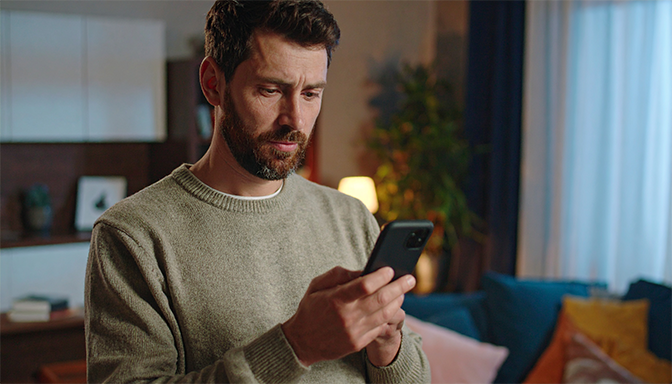
Picture this: your phone lights up with their name, and your first thought isn’t excitement but dread about what favor they’re about to ask. This friend has perfected the art of disappearing when life is good and magically reappearing when they need emotional support, money, connections, or someone to help them move. Research shows that one-sided relationships create significant stress and resentment over time.
What makes this particularly insidious is how they frame their requests. They’re not asking for help; they’re sharing their “crisis” and expecting you to jump in as the solution. When you’re not available or say no, suddenly you’re being “selfish” or “not a real friend.” They’ve trained you to feel guilty for having boundaries.
Pay attention to the pattern of communication. Do they text you regularly just to check in, share funny memes, or make plans? Or does every conversation eventually circle back to their problems, needs, or drama? Healthy friendships involve mutual interest in each other’s lives, not just one person using the other as an unpaid therapist or personal assistant.
Immediate Action Steps:
- Track communication patterns for two weeks to see the reality
- Practice saying “I can’t help with that right now” without elaborate explanations
- Stop being the first person to reach out and see what happens
- Set specific boundaries about when and how you’re available
- Ask them questions about your life and notice their level of interest
How to Address It
Start by creating some distance to gain perspective on the relationship. Stop being available every time they call with a crisis, and see how they respond when you need support. Real friends will adjust their behavior when you point out the imbalance, while toxic friends will often get angry or try to guilt you back into your old role.
If you decide the friendship is worth saving, have a direct conversation about wanting more balance in your relationship. Be specific about what that looks like and watch their actions, not just their words, moving forward.
2. You Feel Emotionally Drained After Spending Time Together

Healthy friendships should energize you, not leave you feeling like you need a three-day recovery period. If you consistently feel exhausted, anxious, or emotionally heavy after hanging out with someone, your body is telling you something important. This isn’t about having one bad day or going through a rough patch; it’s about a consistent pattern of feeling worse after interactions.
Toxic friends are emotional vampires. They suck up all the positive energy in the room with their constant negativity, drama, or need for attention. Every conversation becomes about their problems, their stress, or their latest crisis. When you try to share good news, they find ways to diminish it or redirect the conversation back to themselves.
The exhaustion comes from constantly managing their emotions while suppressing your own. You find yourself becoming their emotional regulator, always trying to cheer them up, talk them down from drama, or validate their feelings. Meanwhile, your own needs and emotions get pushed aside because there’s never space for them in the relationship.
Energy Drain Warning Signs:
- Needing alone time to “recover” after seeing them
- Feeling anxious or tense during conversations
- Constantly playing therapist or mediator role
- Walking on eggshells to avoid setting them off
- Feeling relief when they cancel plans
How to Address It
Pay attention to how you feel before, during, and after spending time with different friends. Notice the stark contrast between energizing friends and draining ones. Start limiting the time you spend with energy drainers and notice if shorter interactions feel more manageable.
Set emotional boundaries by refusing to get pulled into their drama or constant negativity. You can be supportive without becoming their personal emotional dumping ground.
3. They’re Consistently Unsupportive of Your Success
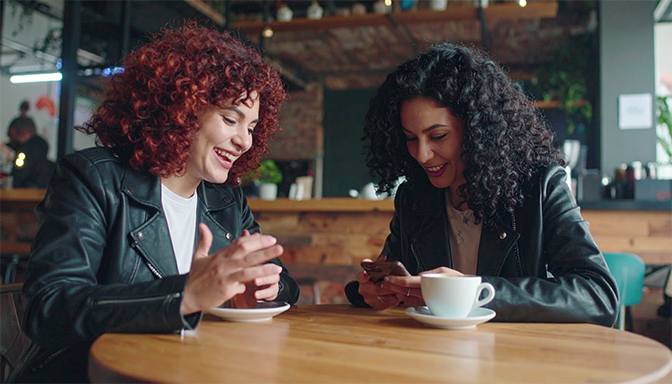
Real friends celebrate your wins like they’re their own. Toxic friends find subtle (and not-so-subtle) ways to minimize your accomplishments, compete with your successes, or make your good news somehow about them. This might look like backhanded compliments, immediate one-upping, or simply changing the subject when you share exciting news.
Watch how they respond when something good happens in your life. Do they seem genuinely happy and ask follow-up questions? Or do they quickly redirect the conversation to their own achievements, find ways to diminish your success, or seem uncomfortable with your happiness? Some toxic friends will even try to sabotage your opportunities because your success makes them feel insecure about their own lives.
This behavior often stems from their own insecurities and competitive nature, but that doesn’t make it acceptable. Friendship should involve mutual support and celebration, not competition and resentment. You should feel comfortable sharing good news without worrying about their reaction or how it might affect their mood.
Unsupportive Behavior Patterns:
- Backhanded compliments disguised as support
- Immediately talking about their own achievements when you share news
- Finding negatives in your positive situations
- Being “too busy” to celebrate your wins but available for their own events
- Making you feel guilty for being happy or successful
How to Address It
Test the waters by sharing smaller pieces of good news and observing their reactions. Notice whether they ask follow-up questions, remember details later, or seem genuinely interested in your happiness. Stop sharing your biggest wins with people who consistently respond poorly to your good news.
A direct conversation about wanting more support in the friendship can reveal whether they’re willing to change. Some people aren’t aware of their competitive tendencies and will adjust their behavior when called out on it.
4. They Violate Your Boundaries Repeatedly

Boundaries aren’t suggestions, they’re requirements for healthy relationships. Toxic friends treat your boundaries like obstacles to overcome rather than limits to respect. Whether it’s showing up unannounced, continuing conversations about topics you’ve said make you uncomfortable, or pressuring you to do things you’ve clearly said no to, they consistently push past your stated limits.
What makes this particularly damaging is how they frame their boundary violations. They’re not disrespecting you; they’re being “spontaneous” or “caring” or they “know you don’t really mean it.” They’ve learned to reframe their disrespectful behavior as positive traits, making you feel guilty for enforcing your own boundaries.
Healthy friends might accidentally cross a boundary once, but they apologize and adjust their behavior moving forward. Toxic friends will cross the same boundary repeatedly, argue with you about why the boundary is unnecessary, or make you feel bad for having limits in the first place.
Common Boundary Violations:
- Showing up unannounced despite your preference for plans
- Continuing to bring up topics you’ve asked them to avoid
- Pressuring you to change decisions you’ve already made
- Not respecting your time constraints or availability
- Sharing your private information with others
How to Address It
Be crystal clear about your boundaries and the consequences for violating them. Don’t hint or hope they’ll figure it out; state your limits directly and follow through with consequences when they’re crossed. Document patterns of boundary violations to see the full scope of the problem.
If they continue to violate boundaries after clear communication, consider whether this friendship is worth the constant stress and disrespect.
5. The Relationship Feels One-Sided

Healthy friendships involve reciprocity – both people initiating contact, making effort to maintain the relationship, and showing interest in each other’s lives. If you’re always the one reaching out, making plans, and driving the friendship forward, you’re probably in a one-sided relationship that’s more convenient than meaningful for the other person.
Stop being the one who always texts first and see what happens. If weeks go by without hearing from them, that tells you something important about how much they value the relationship. Real friends don’t just respond to your efforts; they make efforts of their own because they miss you and want to stay connected.
One-sided friendships are exhausting because you’re constantly wondering if you matter to them while doing all the emotional labor to keep the relationship alive. You might find yourself making excuses for their lack of effort or convincing yourself that they’re just bad at staying in touch, but consistent patterns reveal true priorities.
One-Sided Relationship Signs:
- You always initiate contact and make plans
- They’re slow to respond or often don’t respond at all
- Conversations focus mainly on their life and interests
- They rarely ask about your life or remember details you’ve shared
- You feel like you’re bothering them when you reach out
How to Address It
Pull back your effort to match theirs and see if the friendship naturally fades or if they step up their involvement. This isn’t about playing games; it’s about discovering the true nature of your relationship. Some friendships are meant to be more casual, and that’s okay if you adjust your expectations accordingly.
If you want to maintain a closer friendship, have an honest conversation about wanting more reciprocity and mutual effort in staying connected.
6. They’re Unreliable When You Need Support

Everyone goes through difficult times, and true friends show up during those moments – not necessarily with solutions, but with presence, listening, and emotional support. Toxic friends have a remarkable ability to disappear or become “too busy” precisely when you need them most, while expecting you to be available for all their crises.
This might look like canceling plans when you’re going through a breakup, being unavailable when you’re dealing with family problems, or minimizing your struggles because they’re “not that bad” compared to their own. They’ve trained you to be their emotional support system without offering the same in return.
Pay attention to their availability during your difficult times versus their expectations of your availability during theirs. Healthy friendships involve mutual support during both good times and challenges. You shouldn’t have to beg for the same support you freely give to others.
Support Imbalance Indicators:
- They’re always “too busy” when you need help
- Your problems get minimized or dismissed
- They change the subject when you’re struggling
- Plans get canceled when you’re going through difficult times
- They expect immediate responses to their crises but are slow to respond to yours
How to Address It
Stop being immediately available for their every crisis and see how they respond to reduced access to your support. Notice whether they show more interest in reciprocating when their unlimited access to your emotional labor is restricted.
Be direct about needing more support in the friendship and specific about what that looks like. Some people are naturally self-focused and need explicit requests to recognize others’ needs.
7. You Feel Like You Can’t Be Yourself Around Them

Authentic friendships allow you to be completely yourself without fear of judgment, criticism, or rejection. If you find yourself constantly monitoring your words, hiding parts of your personality, or feeling like you need to perform a certain version of yourself to maintain their approval, the friendship is stifling your authentic self.
Toxic friends often have very specific expectations about who you should be and how you should behave. They might criticize your choices, mock your interests, or make you feel stupid for your opinions. Over time, you start self-censoring to avoid their negative reactions, which slowly erodes your sense of self.
You might notice that you act differently around this friend compared to others, or that you feel relief when you can finally “be yourself” after spending time with them. This constant performance is exhausting and prevents real intimacy from developing in the relationship.
Authenticity Red Flags:
- Constantly watching what you say around them
- Feeling judged for your interests, opinions, or choices
- Hiding parts of your life to avoid their criticism
- Feeling like you need to perform a certain personality
- Relief when interactions end so you can “be yourself” again
How to Address It
Start expressing your authentic opinions and interests in small ways and notice their reactions. Do they show curiosity and acceptance, or do they criticize and judge? Real friends might not share all your interests, but they won’t make you feel bad for having them.
Consider whether this person accepts and appreciates who you really are, or if they only like the version of you that conforms to their expectations.
Conclusion: Choosing Healthy Relationships
Recognizing toxic friendship patterns is the first step toward building healthier relationships. Not every toxic friendship needs to end immediately – some can be improved with better boundaries and direct communication. However, if someone consistently shows disrespect for your boundaries, lacks empathy for your experiences, or drains your energy without offering support in return, it might be time to consider whether this relationship serves your well-being.
Your Friendship Evaluation Action Plan
- Assess your current friendships using these seven signs
- Practice setting and enforcing boundaries with challenging friends
- Reduce time and energy invested in consistently draining relationships
- Focus on nurturing friendships that are reciprocal and supportive
- Remember that it’s okay to outgrow friendships that no longer serve you
Remember: You deserve friendships that add value, joy, and support to your life. Don’t stay stuck in toxic patterns out of guilt, history, or fear of being alone. Quality relationships are always better than quantity when it comes to friendship.
Affiliate Disclaimer: As an affiliate of other sites and as an Amazon Associate we earn from qualifying purchases. Some links in this article may be affiliate links where a purchase would provide us with a commission. We only recommend products and services we truly believe can help you on your personal growth journey.
Advice Disclaimer: This advice is for informational and entertainment purposes only and not a substitute for professional counseling, therapy, financial, legal, or medical advice. You are responsible for your own decisions and actions. For serious issues, please consult qualified professionals.
FriendshipPositive Flip2025-08-08T14:38:13-06:00

